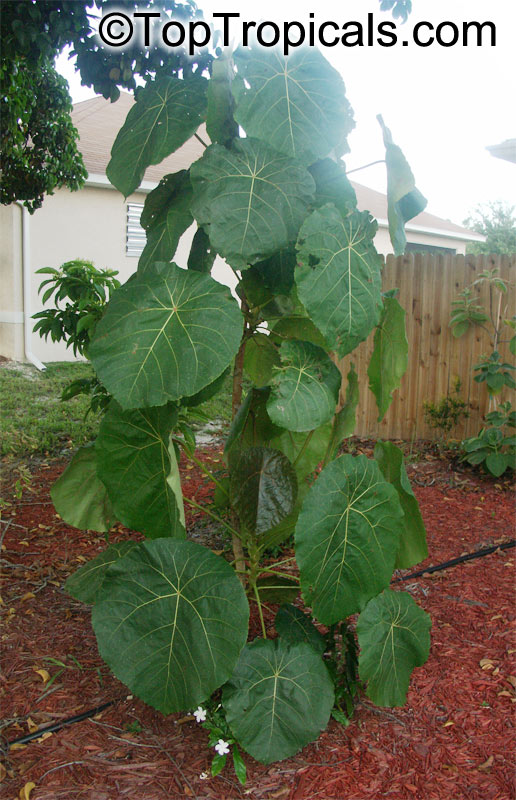Macaranga grandifolia - Elephant Ear Tree
The very quintessence of tropical foliage luxury
by Mark Hooten, the Garden Doc
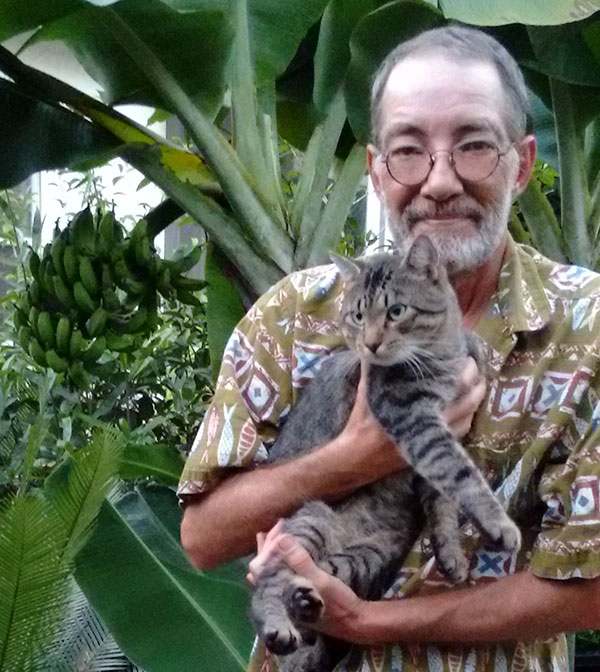 About the Author
About the Author
Mark Hooten has been fascinated by horticulture since childhood, with interests including tropical fruits, cacti, ethnobotany, entheogens, and variegates. Having been employed in both FL and CA by botanical gardens and specialist nurseries as horticulturist, manager, propagator, and consultant, he is happy to speak with fellow plant worshipers at TopTropicals Nursery. Mark is currently busy writing a volume on the complicated history of croton varieties. His passions are plants, cats, and art of painting.
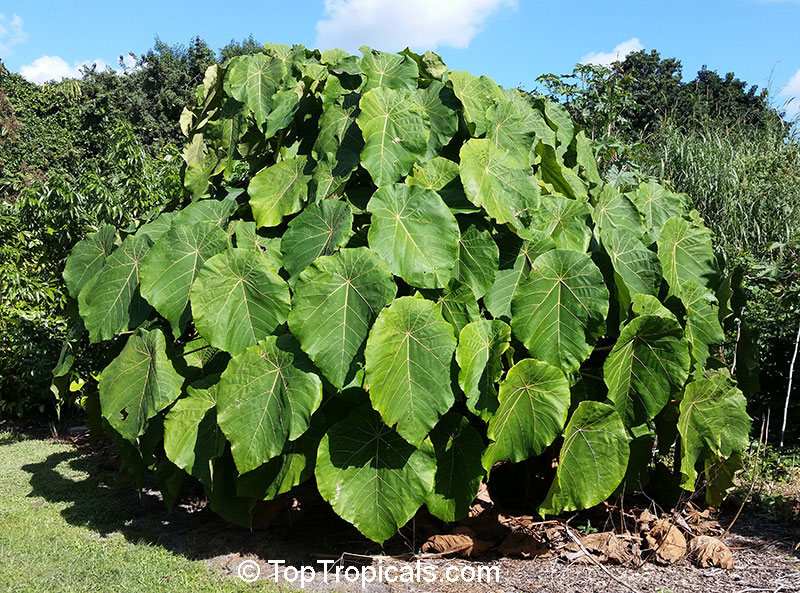
Why is this wonderful little tree so unknown here in Florida? I can only guess it's because people don't see them, and therefor don't know about them, and that basically no nurseries grow them. Yet it's one of the most utterly spectacular foliage plants conceivable. If I were to give it a common name, I think I would call it "Elephant Ear Tree". To me, the genuinely grand foliage much more resembles the ears of actual elephants (esp. the Asian species) than do the leaves of the much more commonly known and grown "elephant ears" meaning certain Alocasia and Colocasia.
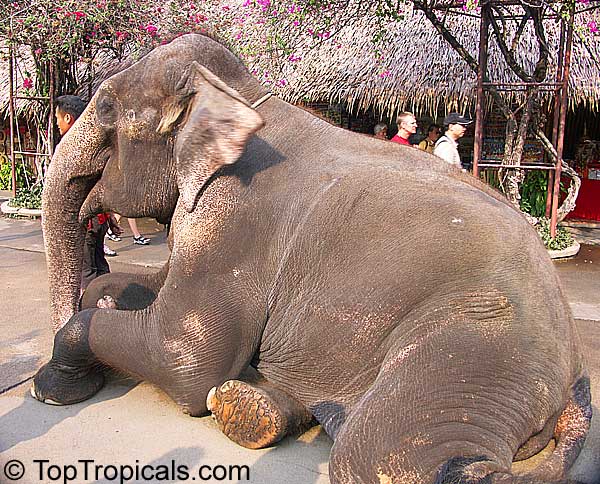
Macaranga grandifolia would have to be described as a "small" tree. They grow very upright and vertically, and the few side branches also grow upright, giving even an older specimen a distinctly columnar impression. Yet this column is composed of substantial, leathery textured, tightly stacked, huge rounded leaves! An established specimen would certainly make an unforgettable statement for a variety of landscape purposes. I would describe it as being the very quintessence of tropical foliage luxury!
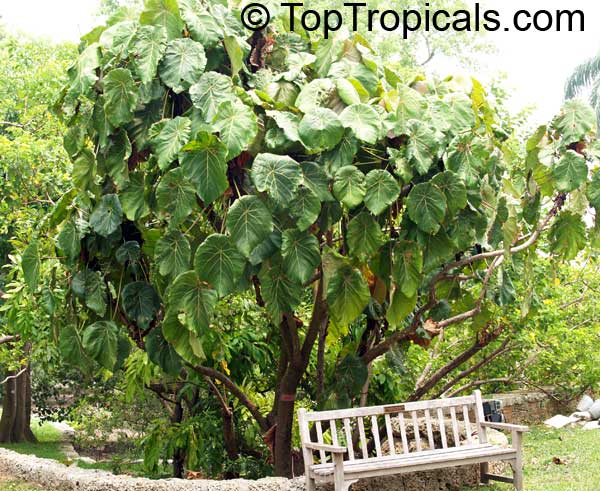
Provided with an appropriately warm climate such as South Florida or elsewhere, there is no reason they should not be seen more often (for purposes of utter awe). They grow neither fast nor slow, but steadily, and seem to not be plagued by any particular insect or fungal problems, meaning that once established, they are really pretty much care-free in a nice, rich, moist environment. They seem to be capable of growing in nearly full sun (provided good watering), yet develop even larger leaves and are more handsome when provided with some shade from the strongest afternoon sun.
RECOMMENDED FERTILIZERS:
SUNSHINE Robusta - Rapid Growth Booster
Tropical Allure - Smart-Release Booster
Read more info about Macaranga.
